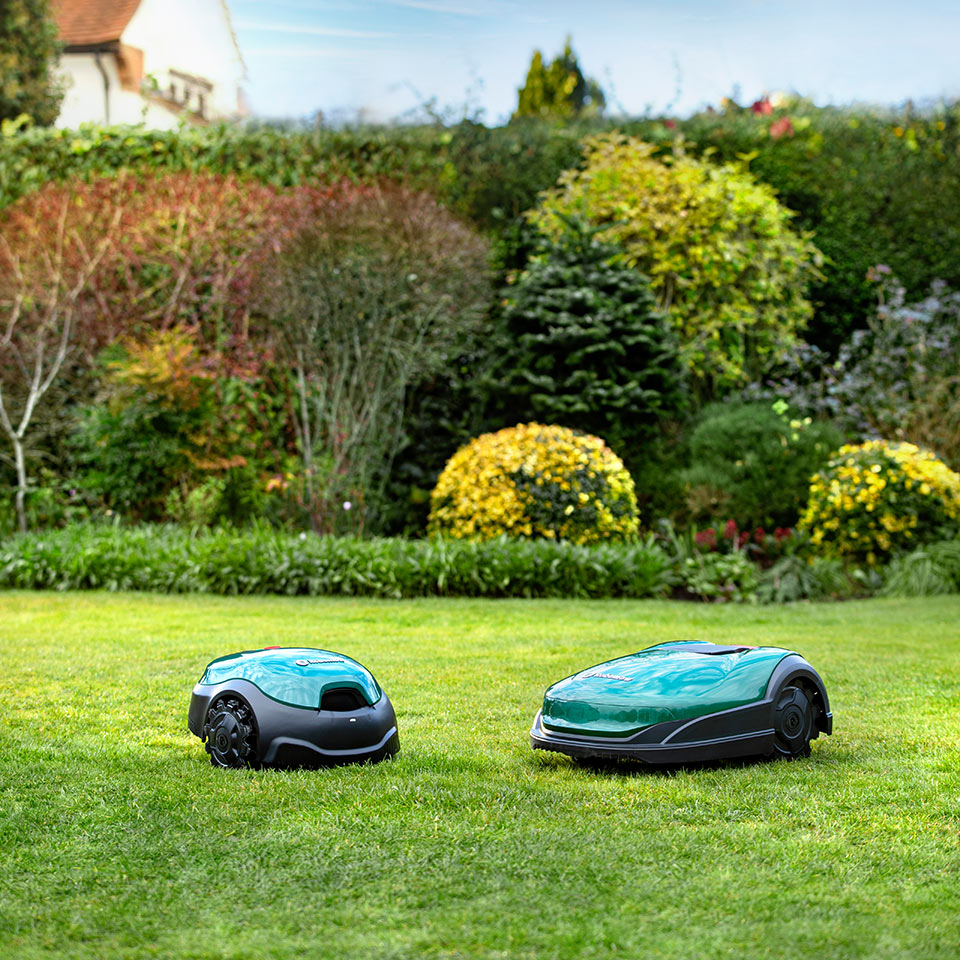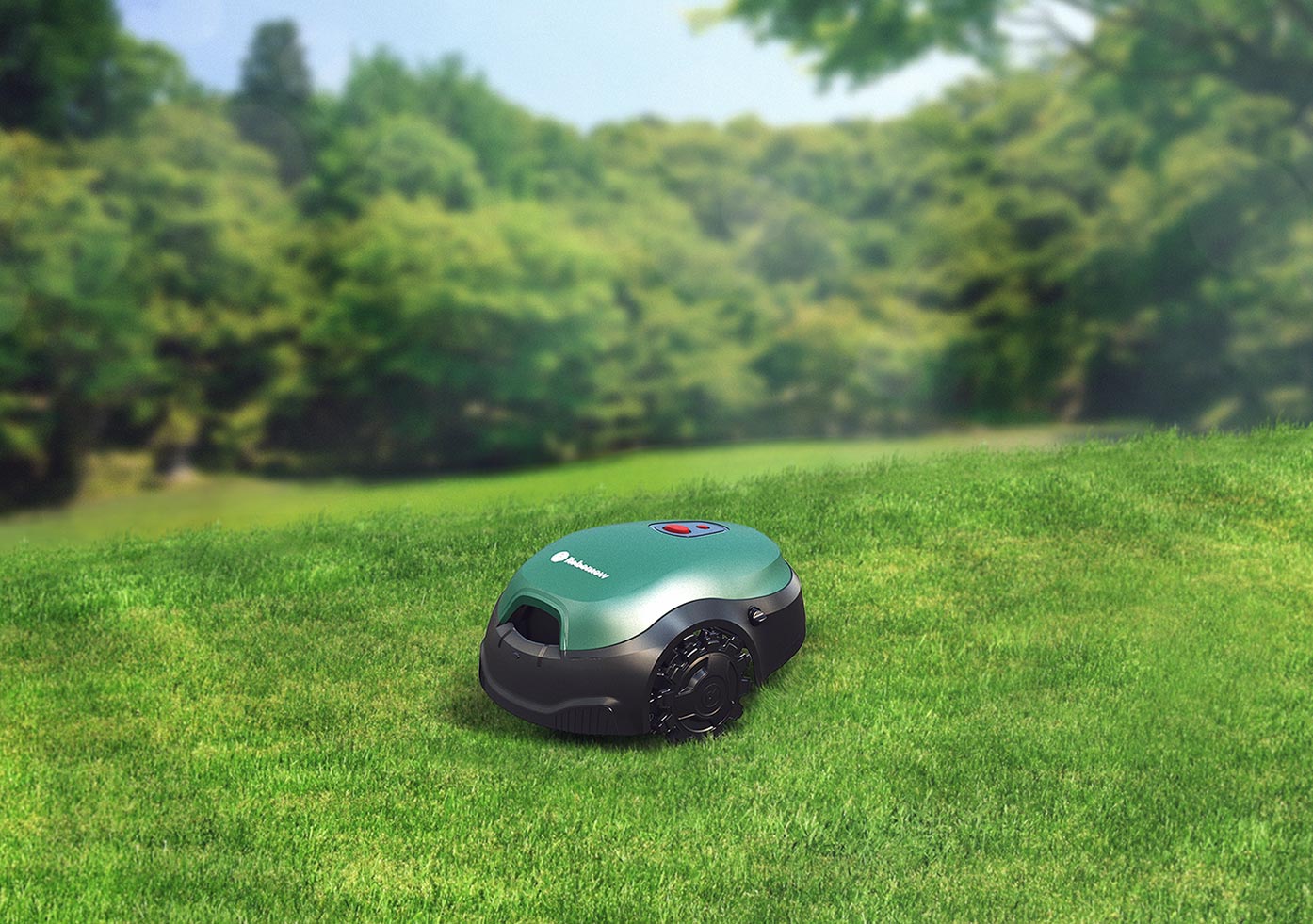Which robotic lawnmower is suitable for which lawn size?
17.05.2021
The decision in favor of purchasing a robotic lawnmower is often pondered in order to reduce the effort required on lawn care and ultimately to have more time to enjoy leisure time in the garden. However, this only works if the robotic lawnmower is suitable for the area. Besides that, other features are important so that the device can do its job to your complete satisfaction.
It all depends on the area output
The first thing to look at when comparing different robotic lawnmowers is the area output. After all, the robot can only mow an entire area if it is designed for it in the first place.
Caution is advised here with the manufacturer's specification of the maximum area performance. This merely states what area a robotic mower will mow under truly perfect conditions. In reality, however, the following factors can reduce this optimum by up to 30%:
- slopes
- obstacles to be avoided
- weather conditions (rain sensors)
- variable mowing times
- lawn type
- garden layout
Determining mowing times
When determining the theoretical maximum area output, some manufacturers calculate with round-the-clock operation, while for others use mowing times limited by the software to 12 hours a day, for example.
In everyday life though, hardly any garden owner will let the robotic lawnmower work around the clock. It is much more likely that it will be limited to the morning, so that the garden can be enjoyed peacefully after work. At night, on the other hand, you should refrain from using the robotic lawnmower anyway. Don’t forget, you don’t want to endanger our nocturnal friends like hedgehogs and others.
Before you determine the required area output of the robot, first think about the desired mowing times per week.
Calculating the correct area output
Once the maximum mowing time per week has been determined, the next step is to calculate the required area output in order to manage the lawn area in the desired time.
Of course, you also need to know the size of the lawn. This can be determined using Google Maps, for example. Then the required area output can be calculated as follows:
Required area output of the manufacturer in m² = lawn size in m² / desired mowing time in hours x operating time for the area line in hours according to the manufacturer.
Example: You would like to have a 1,000 m² garden mowed for a maximum of 40 hours per week. The manufacturer specifies a mowing time of 120 hours for its models to achieve the area performance:
1,000 m² / 40 hours x 120 hours = 3,000 m².
You will need a robotic lawnmower with a maximum area output of 3,000 m² for your garden.
Features of a robotic lawnmower for small areas
Small lawns (e.g. 300 m²) usually require different demands of a robotic lawnmower. It is less important to have a powerful battery that mows large areas in a short time, but primarily maneuverability and an accurate cutting result in winding gardens is vital. Particularly important features for robotic mowers in small gardens are therefore:
- pendulum suspended mowing deck
- low noise level
- cutting width from 18 cm
- sensors for maximum maneuverability
- 360° sensor for obstacle detection
Features of a robotic mower for large areas
Large lawns of 2,000 m² and more require a powerful battery so that the robotic mower can cover the area in the shortest possible time. A large cutting width also ensures that the robotic lawnmower works efficiently and should NOT be at the expense of the cutting results.
- pendulum suspended mowing deck
- powerful Li-Ion battery
- cutting width up to 56 cm
- 360° sensor for obstacle detection
Features of a robotic mower for slopes
If there is a slope in your garden, this should play a role in the purchase decision. While many cheap models are only designed for slopes of 20-25%, high-quality robotic mowers can handle slopes of up to 45% and more.
Wheels that are suitable for off-road use are particularly important as they enable the robot to easily drive up and down slopes without slipping. The wheels have a particularly good grip and therefore always provide optimal traction.
Reducing the time spent on lawn care
Finally, it is important to reduce the time spent on lawn care. Accordingly, your robotic lawnmower should have other features regardless of its area output:
- A GSM module facilitates the control and programming of the robot through app use, which can be done independently of location and time.
- An edge-cutting function reduces the need for retouching the lawn. If the lawn edges are appropriately designed, subsequent trimming is completely unnecessary.
- If the robotic lawnmower is equipped with a mulch remover, the cleaning effort is minimal.
It certainly makes a difference whether your lawn area is 300 or 2,000 m² because there is no robotic mower that offers the perfect solution for all lawns. In order to really find the right model, it makes sense to deal with the conditions of your own garden before purchasing.
Products
Buy a Robomow
Robomow owner
About us
Sales & Support


